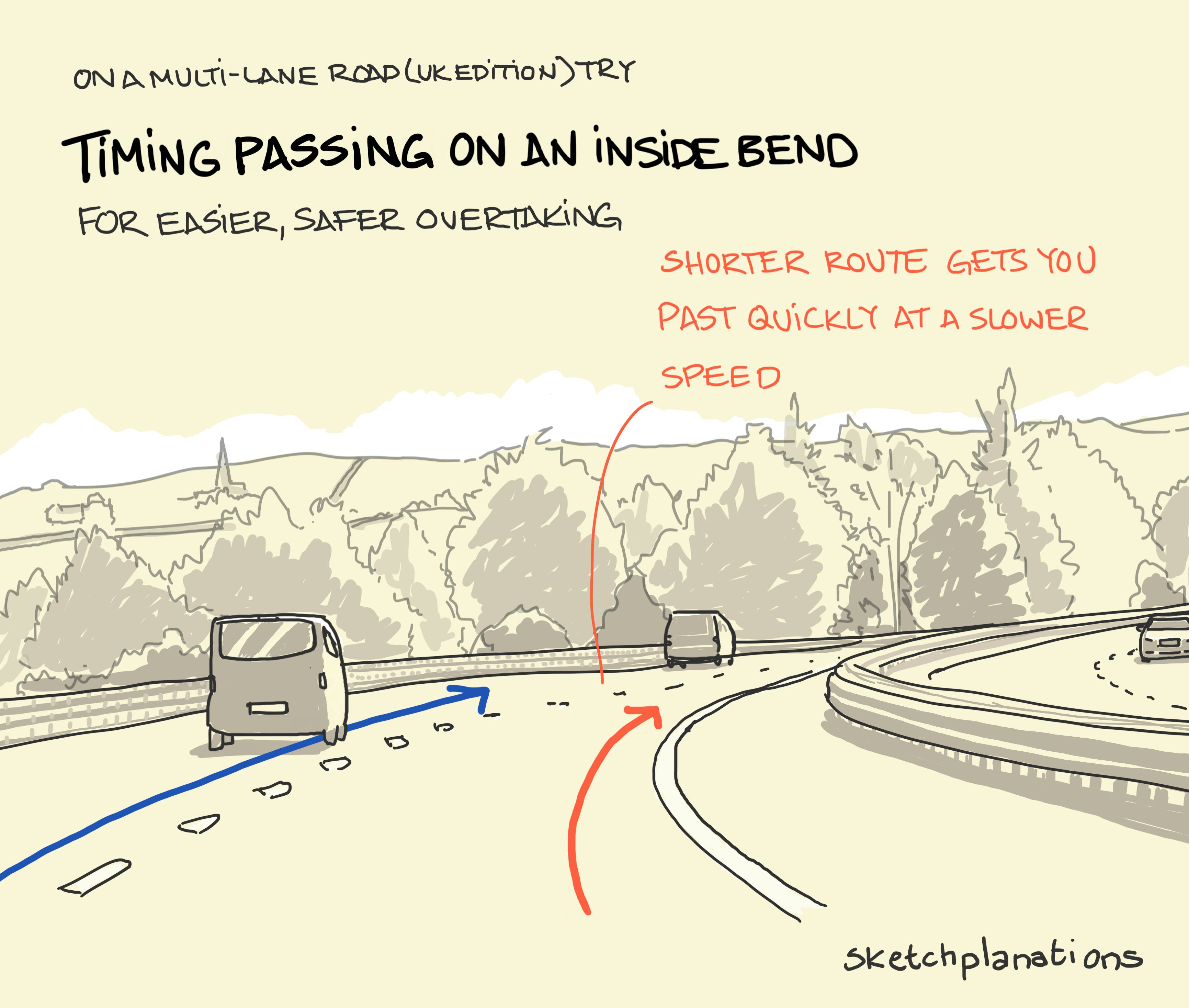Get my new weekly sketch in your inbox
Join over 30,000 people learning something new in a moment each Sunday.

Passing on an inside bend
We all know that racing drivers overtake on the inside — it's the shorter, faster route. It was only relatively recently that I found how useful it can be on a long drive, too, not for racing but for using the bend on a multilane road for easier, safer overtaking.
Perhaps this scenario will resonate: after cruising at a steady speed for miles of a long journey you slowly catch up with a car traveling just a few miles an hour slower. You're not driving fast enough to zip by them, but the difference is enough to slow your steady progress on a long journey, and if you're driving near the speed limit anyway you probably don't want to accelerate much to overtake.
On a multi-lane road like a motorway or freeway — not a single lane road where you'd be overtaking with reduced visibility on the corner in the opposing lane — timing your overtaking so you're on the inside of a bend and the slower car is on the outside allows you to get round the slower driver in a shorter time and without needing to travel nearly as fast.
And the converse is also true: if you've timed your overtaking when approaching a bend where you'll be on the outside you'll find that you'll have to go a lot faster to get round or perhaps that your intended overtaking is actually not getting you past at all.
You’re welcome to use and share this image and text for non-commercial purposes with attribution. Go wild!
See licence

